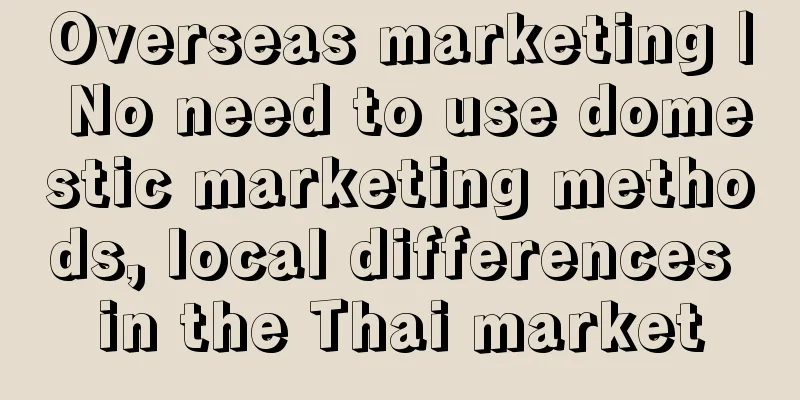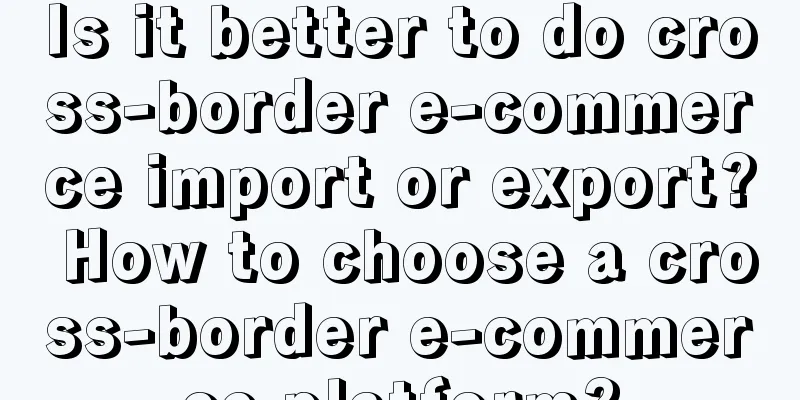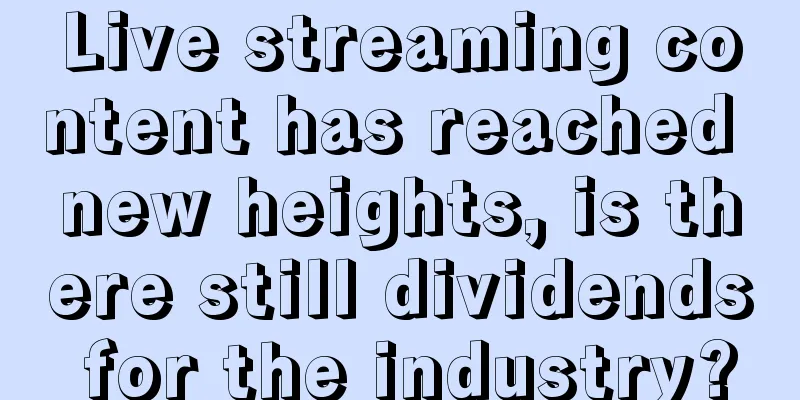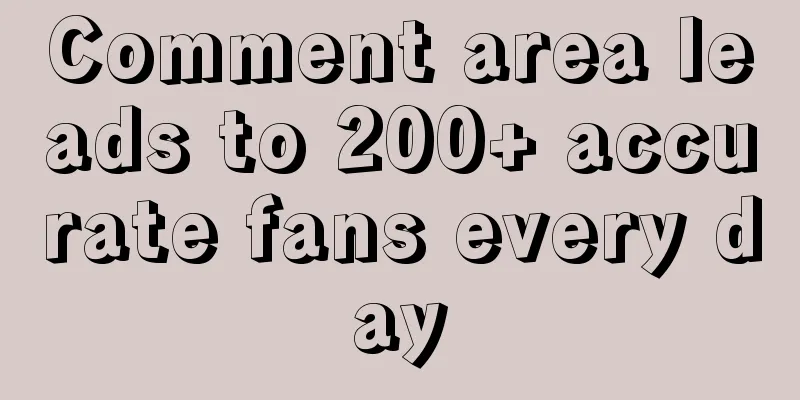Consumer insights, what exactly are we looking into?

Many people who work in marketing feel that their work has no sense of accomplishment. They are either accompanied by advertisers who only care about the layout of the page, or they have to succumb to all kinds of sales pitches from salespeople. If a job does not give a sense of accomplishment, apart from objective reasons, it is mostly because the working method is wrong, which makes it impossible to master it and is far from expectations. If you know you are wrong, you can change it if you want to. But there is a kind of mistake that is wrong from the beginning, but you have no systematic subject training and are unable to distinguish and believe it. This is the dilemma of reality. For example, consumer insights: under different cognitions, the research focus is different. Many people think that insight means listening to what consumers say, organizing their behaviors, or even directly putting the customers’ words into PPT as reasons to convince superiors. But this causes many problems. You don't know the consumer, and you may not understand him well enough. Even if you are 50 years old and he is 20 years old, you may not understand him at all. Even if you give him New Year's money and talk to him face to face, there is still a huge gap between the two of you. Insight means to see through. The requirement here is to observe thoroughly, not just on the surface, but to discover the inner content and meaning. Think about it, do you understand your parents, do you understand your colleagues you work with day and night, do you understand your friends? By the way: Why do we need insight? The essence of marketing is exchange. Consumers want to exchange because they have a need. Enterprises can exchange because they create value. Exchange is the exchange of demand and value, which is the core part of consumer decision-making - purchase. Therefore, in this process, we need to consider what internal and external factors will affect consumers in the decision-making implementation path, how companies create value, and how they influence purchasing decisions in the process of delivering value. There is an interesting point here. It seems that traditional marketing pays more attention to various psychological variables, and derived many communication theories such as brand and positioning. Modern marketing pays more attention to behavioral variables, thanks to the progress of the Internet, which makes behavior traceable. Consumer insight does not mean that you have discovered a certain behavior of consumers. Insight is a statement that connects "why" and "consumer decision-making". Insight must clearly explain the "why". If you only discover a certain behavior but cannot answer the question of why, then what you have done can only be regarded as research discovery, not insight. Insight - is a deep understanding of consumers. So what exactly do we need to understand? First layer: consumer behaviorThis is the first step of insight, and also the first level, the lowest level and the most short-sighted insight. If you want to know what consumers will choose, analyze their choices and wait and see. The basis is what he chooses to prove what he needs. Segmenting consumer behavior is the commonly used consumer behavior research tool 5W2H—— Purchase target (What), purchase motivation (Why), purchase decision (Who), how to buy (How), expected price (How Much), purchase time (When) and where to buy (Where). Of course, studying consumer behavior is important, but it is foolish to replicate consumers' past behavior and make decisions about your products and marketing, because there are two problems: For example, if residents of a fifth-tier city want to treat someone to a meal, all they can do is pick the tallest person among the local short people. It’s not that they like a particular restaurant, but they have no choice. Today, we went to visit third-, fourth- and fifth-tier cities. Self-media writers consistently said that these were sinking markets, but if you walk down the streets, you’ll find that there simply aren’t any better options… There’s a lack of infrastructure, scenes are withering and services are poor. Can you define whether it is demand that determines supply or supply that determines demand? For another example, thanks to the development of the Internet, behavioral research has been used to the extreme. Today, if you just search for a product on Baidu on your mobile phone or PC, after a period of time, the ads pushed by your software, pop-up ads, and e-commerce recommendation pages are almost all ads for the same products you searched for. Maybe you are fed up with it. Second level: Consumer perceptionJobs said that if Henry Ford had done market research before inventing the automobile, the answer he would have gotten would have been that consumers wanted a faster carriage. This is very impressive. Not only is Jobs emphasizing the disruptive nature of his product, but he is also stating a certain fact. Is the consumer's demand a horse-drawn carriage? No, it's faster. Whether it is a horse-drawn carriage or a car, it is just a product solution to meet the demand for "faster". However, consumers are not obliged to tell you what they want, nor can they accurately express it. In the era of horse-drawn carriages, we as consumers can probably only say: I want a faster carriage. Most likely, we will just ask the carriage seller how fast your carriage can run. In the end, we will compare the prices of three different carriages to see which one is faster. So, if we only focus on consumers' behavior of comparing and shopping to see which carriage is faster, we can only make faster carriages. Society is constantly progressing, and it is precisely because society does not adopt the method of behavioral replication that breakthroughs are possible. Behavior is the appearance, behind which is the driving force of ideas. Whatever anyone does is guided by his or her ideas. Because only humans are animals based on meaning, and behind all behaviors there is a set of supporting values. Concepts, when applied to marketing, can be expressed in one word - consumption concept. The advertising industry is the entertainment industry, and branding is the dream-making industry. Consumers don’t know what they want, so brands become the medium and carrier for users to express themselves. Products are not just products, but also an indispensable role in users’ lives. He represents the user's wonderful inner drama, and the product is the user's media. Only then can it be called a brand. What is a brand? A brand is a community jointly built by a product and its users. There is no good or bad product, it depends on who it is for and what problem it solves. As long as no one wants it when it is thrown on the street, it means it has value. The dilemma is often that the group of people you want to sell to are not willing to pay for it - they are in the wrong position. The problem could be: Your target customer group, that group of consumers, doesn’t understand you at all; consumers don’t accept your value proposition at all. In both cases, you have chosen the wrong target audience. The solution to the problem is not complicated - re-polish your brand and your brand values, and then let your target customers recognize your values. Our society is constantly progressing, including the emergence of new brands in recent years. Rather than product innovation or category innovation, it is more about changing consumer values, although ideas are also shaped by society - it is not you who need values, but consumers who do. In other words, ideas are the reasons that consumers use to convince themselves to consume. Can you keep up with and iterate on their ideas? When consumers believe that their ideas match what you say, they can derive a set of value system and find evidence to support consumption from various dimensions, and then they can convince themselves. The so-called brand expression is to constantly play the game of infinite expression based on your brand text. And here is a word: In the 1950s, Reeves proposed the USP theory, which has become the selling point theory advocated by many advertisers today. This may be a distortion and regression. According to the selling point theory, any best-selling product has a bunch of selling points, and those products that cannot be sold have no selling points. To put it conversely, if you can find problems with any best-selling product, those products that cannot be sold also have selling points. Although the USP theory "Unique Selling Proposition" emphasizes the tool value of conveying the brand to consumers, it does have the word "unique" in it. When implementing your selling point theory, is it "unique, something that your competitors cannot do or provide"? The USP theory is not outdated. When applied to brand building, it turns product value into one's own brand theory. Continuous emphasis and output is actually a paradigm for managing consumer cognition. And you, do you have it? Just like if you don't understand that the rich buy houses to make money, and you keep emphasizing the house types in the community, as a result, people won't even reply to your messages; there are also those who don't understand why newlyweds buy houses, think about whether they want children, who is in charge of the family, whether they live with their parents, what kind of jobs they have... but you recommend them to buy villas and keep telling them that villas make money. These are two different concepts. The former buys a house to make money, and when the market is good, he is not going for the value of the property; the latter is mostly for a better life, to improve his life, so he needs to consider the value point. To put it bluntly, who designed your property - consumption view > value point. First accept your consumption concept, then accept the bunch of value points you mentioned, and pay a price. The new brands in recent years are all good at ideological work for consumers, and they have kept up with the concepts. For example, Yuanqi Forest, which is sugar-free, low-fat and calorie-free; BOSIE, which is gender-neutral and age-neutral; Bananain, which is label-free underwear... Although consumer behavior is based on needs and desires, needs and desires come from concepts, so where do concepts come from? The third layer: LifestyleInnovation means keeping up with changes in consumer perceptions. As mentioned before, humans are amazing animals. Only humans are animals that value meaning. Excellent people weave meaning for themselves, while followers have meaning weaved by others. Most companies know nothing about consumers’ consumption concepts, and they don’t even know who their customers are. Of course, concepts are a headache, after all, consumers themselves can’t explain themselves clearly, but it’s not okay for marketers to do the same. However, if you calm down and observe his circle of friends, you can get a glimpse of it. Many people will miss the time when celebrities could still "talk nonsense" on Weibo, such as Lei Jiayin and Na Ying, and used Weibo as a circle of friends. Concepts, just like your dad can't understand why you buy a bunch of blind boxes and JK and wear Balenciaga with letters on them, you can't understand why your dad insists on turning off the lights when everyone leaves. But he has a kind of magic. Once you accept a certain concept, you will feel that it is natural. To give another example, major mobile phone manufacturers generally believe that the elderly are old and in poor health, and cannot stand young people holding mobile phones, so they develop a large number of real feature phones that can only make calls and send text messages. But now, you have to persuade the elderly and your father to watch less Douyin, play less PUBG, play less King of Glory, and read less health articles on WeChat... How do you judge concepts? From society. There is a saying that goes: philosophy is made. What this sentence means is that what we take for granted are all influenced by the environment. There is a theory of market segmentation, which was proposed in 1956. What market segmentation is about is people - consumers in a market have different demands and require different products. From this time on, our understanding of users began to deepen gradually. Our focus on users not only focused on the study of their needs, but more importantly, on the exploration of their psychology. In 1963, William Leiser proposed the concept of "lifestyle". Yes, the lifestyle that we emphasize now actually existed a long time ago. This is actually a further deepening of market segmentation. Different groups have different lifestyles. We need to design products to meet their lifestyle needs, as well as the user image of the product, that is, the brand image. This also shows that the quality of your brand comes from how users define you, and all you can do is to influence consumers' definition of the brand and iterate and manage it. A consumer's needs and desires come from his definition of himself and the lifestyle he wants to have. So where do these two come from? As mentioned before, there are influences from both internal and external aspects. Internal feelings, perception, memory, motivation, personality, emotions, attitudes, etc.; while external influences include subculture, social status, reference groups, family, etc. The scope is too large? For example, the company in the movie "Jurassic World" created a completely non-existent dinosaur by combining the genes of multiple different animals through genetic modification. This new species, which was not recognized not only by humans but also other dinosaurs, ran out and indiscriminately attacked all creatures it saw. Anyone can rush up and tear it apart. Why? He needed to determine his position among so many creatures. Of course, humans are not dinosaurs. So what is lifestyle? Lifestyle comes from life, from the choices we make in all aspects of life. Life comes from your real life, not what is written by self-media writers, nor is it the movie stars or internet celebrities who drink coffee in the morning and wine in the afternoon. Everything that is told by people is just a state of life, not life. Before the education reform, parents enrolled their children in various training courses. Even though they knew what the training courses were about and that the prices were inflated, they were still willing to invest their entire family's money in them, and they would not blink an eye even if the tuition fees cost hundreds of thousands at a time. But when they look at those children who did not attend training classes and communicate with their parents, they always feel an inexplicable sense of pride. If you think about it carefully, this is actually a lifestyle, a lifestyle centered around children. For the sake of lifestyle, one can turn an old, dilapidated house into a sky-high-priced school district house, give up work, hang out with girlfriends, and be a tutor, give the fish body to the child and eat the fish head while saying that one does not like to eat the fish body, start researching beauty makeup and then research soup recipes... Therefore, lifestyle is the choice of one’s own position in a specific scenario. There are two key points here: one is himself, the most important one among his many identities and roles. Fortunately, most people’s identities are relatively simple; the other is the strong relationship, the most important relationship among his identities and roles. The woman in the example above has multiple identities and roles. She is herself, a friend of her best friend, a colleague at work, a mother, and a wife... She has a different life in each of her identities and roles. But in the examples above, many people have given up or weakened their other identities, roles, and lives. She can give up several months' salary for her child and stay at home to accompany him in his studies wholeheartedly. Her identity and role is that of a mother, which is more important than her other identities and roles. The person with whom she has the strongest relationship is her child, and this is her motivation for doing so. Of course, the lifestyle may still be difficult to understand. Let’s get back to life. What is life? Life is the connection of relationships. Sometimes life is not something you choose. Many people say they don’t want to get married, but they may get married the next day. Because many people get pregnant before marriage, they are forced to enter a new life. Therefore, lifestyle is a choice of life, which is actually a choice of relationships. A person's life constructs a person's daily life. In the dimension of time and space, this is a person's world. People are busy all their lives pursuing their ideal lifestyle. As long as you can give the other person a lifestyle that satisfies him, he can give his all. The fourth level: further refinement of lifestyleThe world is objective, with a unique set of space-time coordinates. The world is also subjective, and everyone lives in a part of their own choice, even if it is passive. The lifestyle is still too big, I still don’t understand it, and I don’t know how to guide reality. The above mentioned lifestyle mainly depends on two points: the main identity role, and the role under that identity, but it does not mean that you can't do other things. A person's identity and role are diverse and do not remain unchanged throughout life. Just like, you have to dress formally for work, wear a skirt when you go out for a drink, and wear pajamas on weekends when no one is around... In a certain period of time and space, a person's identity role depends on the main identity role, and in the micro level it often depends on the scene in which he is in. Different scenarios, different roles, different lifestyles, and different understandings of things. Scene design is about roles. Only with roles can you integrate into the scene and find your position. You see different things depending on where you are. Just like the old city, outsiders think that this is the local feel of the city, but those who have lived here for more than ten years may think that it is backward. For city managers, there may be fire hazards and floating population management here. To understand a person, we need to look at the scene he is in. This scene is diverse. The scene gives each person a role and gives him the concept of the role. We must also explore his position to understand how he sees what he sees. Why are there always conflicts between leaders and young people in companies? Because everyone has different roles and positions, but they are too lazy to understand and communicate with each other, the boss only focuses on his own preferences, and even if everyone below opposes, he still believes in his own experience. Young people, on the other hand, may only focus on their own little bit of land and cannot understand the ideas of the leader. In the long run, they will lose interest in work. Of course, a business is an organization, and building the right scenario for the organization depends primarily on leadership. But it was the great man who provided a method, to go deep into the masses, to investigate and study, to understand real people, to understand their lives, and to understand their world. Knowing what you want is the first level, knowing what others want is the second level, and defining what you want based on what others want is the third level. It is precisely because everyone is in a different situation that everyone's joys, sorrows, anger and happiness are different, and the way of dealing with them is also different, so human joys and sorrows are not the same. All the appearances in the world are false. What does it mean? Appearances are created by the mind. The appearances we have of our interaction with the objective world all come from our own handling of the interaction. Just like, lifestyle is your choice of life, whether it is active or passive. How to make a choice can change, because "how" is changeable, and it determines how you will choose. Having a choice and not having a choice are the same thing. What determines it is nothing more than the degree of control you have over resources, and your own identity, role, and cognition. There used to be a show called “Super Girl”, which let city kids go to the countryside to experience life… There was also a show in Hong Kong that let rich people experience life without resources for 24 hours. As a result, some of them just slept on the street like homeless people. In other words, what we call life, if you trace it back to its source, is indeed "having a choice" and "not having a choice". Children in the village and children in the city are in different situations and have different access to different things... What is ultimately manifested is the so-called different abilities. But this is also where the most interesting thing about people lies. After experiencing it, the rich man said that for many things, hard work alone is not enough. But hard work may not necessarily lead to success, but not working hard will definitely not work. Behavior depends on the way of dealing with it, ideas guide behavior, ideas come from lifestyle, lifestyle sets the scene, the scene sets the role, and the role determines the way of dealing with it. |
<<: Building a data indicator system, I summarized the entire standardization process
>>: Ready-to-use copywriting tips from masters (02)
Recommend
The decisive battle for women's clothing return rate, how to reduce the return rate by 20% through full-link optimization, 10,000 words of practical experience (Part 2)
This article deeply analyzes the pain points of hi...
How to plan a private domain event from 0-1 (Workflow of the planning stage)
Private domain is a very important part of product...
The domineering president harvests Southeast Asia
The enthusiasm for the short drama market has been...
From content to consumption, emotional needs pry male users' wallets
Nowadays, most of the popular people are driven by...
Xiaohongshu's traffic code for the new year has been "mastered" by them
What new changes will there be in Xiaohongshu'...
Will the 9.9 yuan AI Barbie photo take away photographers' jobs?
As the box office of the movie "Barbie" ...
In 2023, the logic of traffic growth should change
If the average price of a cup of coffee on the mar...
Can I return items purchased from Amazon? How do I process returns from Amazon?
Sometimes the purchased goods may not meet expecta...
What does Amazon Advertising Portfolio mean and what does it do?
For Amazon merchants, it is necessary to better op...
Brands, please read this! A guide to avoiding pitfalls in marketing to women
March 8th Women's Day is coming. What kind of ...
Is it reliable to buy things on Amazon? Can I buy them?
Amazon's products are mostly from overseas. Fo...
How to use Xiaohongshu without violating regulations with a low budget? See these 3 business cases!
This article talks about Xiaohongshu's merchan...
The BDZF model for e-commerce is used by the world's top 500 companies
This article abandons various "high-sounding&...
Create a book list account! Douyin sold 400 million books in one year!
Is there any possibility for the development of bo...
From Douyin to Xiaohongshu, two faces of "county town aesthetics"
Explore the social significance behind "count...









